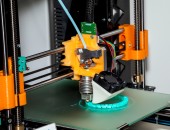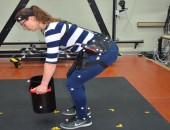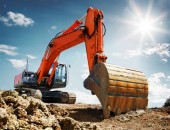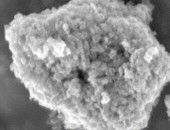- Artificial Intelligence (AI)
- Occupational exposure limit values
- List of CMR substances
- Ergonomics
- EU GHS Regulation
- Industrial Security
- Collaborative robots
- Noise
- Nanoparticles at the workplace
- NoRA OSH standards search tool
- REACH
- Reference materials
- Proficiency testing
- Radiation
- Vibration
- Virtual reality
- Work 4.0
New technologies and materials
Technological progress means more than just digitalization. Other technical innovations also have an influence upon the world of work and therefore upon the safety and health of workers. Examples are robotics, virtual reality, 3D printers, and the production of nanomaterials.

- 3D printers
- 3D printers are becoming more and more common. New spheres of OSH research aim to deliver valid conclusions regarding emissions from 3D printers and therefore their possible impacts upon the health of workers.

- Exoskeletons
- Exoskeletons have been used for some time to good effect in medical rehabilitation, for example in order to enable victims of spinal injuries to walk again. Exoskeletons specifically for use at commercial workplaces are now increasingly appearing ...

- CCTV systems on construction machinery
- Digital media such as camera systems and monitors are often used in order to facilitate work tasks, for example on construction machinery. Whether such technology-assisted man-machine interfaces enhance safety and health at work or are associated with risks of their own is a question that must be answered by prevention research.
- Collaborative robots (COBOTS)
- A new generation of collaborative robots is making inroads into production plants. These machines work directly alongside workers, without safety fences. This proximity necessitates new safety standards.

- Competence Centre for Artificial intelligence and Big Data
- Artificial intelligence (AI) and big data are currently regarded as key technologies of the future. While offering a wide range of new opportunities in safety and health at work, these technologies also involve a number of risks. Specifically ...

- Ultrafine aerosols and nanoparticles at the workplace
- Nanotechnology and the products for the manufacture of which it is used present new challenges for measurement technology and for preventive activity in the interests of the safety and health of workers at work.
- Virtual reality
- Virtual reality (VR) is the use of information technology for the exact and realistic representation of environment scenarios such as work situations and their properties. VR embeds the user in the artificial (virtual) world and permits interaction with this environment in real time. Occupational safety and health also exploits the potential offered by VR, for example for risk assessment of workplaces and work equipment.